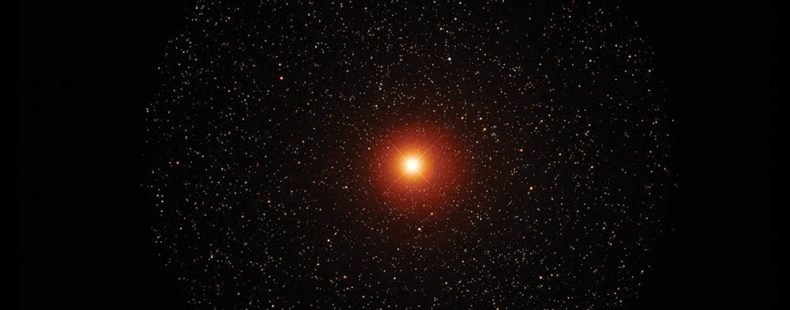What is Betelgeuse?
No, it’s not the lovably creepy character played by Michael Keaton in the 1988 Tim Burton movie Beetlejuice, though many folks pronounce them roughly the same way.
We’re talking about the red supergiant star in the constellation Orion. That Betelgeuse, and its 20 times more massive than the Sun and nearly 650 light-years away. That’s almost 4 quadrillion miles away.
So, how did the tenth brightest star (if we include the Sun) in the sky get the name Betelgeuse?
Where did the name Betelgeuse come from?
While observed since antiquity, the name Betelgeuse is a French rendering of an Arabic name, which has been recorded as bit al-jauza or yad al-jauza.
While it’s exact translation is disputed, al-jauza has been interpreted as “the central one” or even “the giant,” referring to Orion (as well as Gemini). Bit has been interpreted as “armpit” and yad, “hand,” making bit al-jauza, in one translation, “the armpit of the Giant,” referring to the location of Betelgeuse in the constellation.
A little science …
Fun fact: When a star of Betelgeuse’s mass collapses, it releases neutrinos, elusive particles that travel almost as fast as light. As the name suggests, neutrinos aren’t harmful—they pass through matter without effect. Gamma rays may be the basis of many Marvel Comics heroes and villains, but in real life they are a form of high frequency light with a wavelength too short to appear in the visible spectrum.
Gamma radiation is emitted from a nuclear reaction, essentially what’s happening inside an exploding star. If exposed, this would be bad news for Earthlings. Fortunately, scientists concur that Betelgeuse’s gamma rays would not be a significant threat to us, so we should be safe when Betelgeuse goes supernova.
The truth is, while astronomers are very certain Betelgeuse will supernova, and relatively soon, that “relatively” is in astronomical time, which can be pinpointed precisely down to sometime in the next 100,000 to 1 million years.














